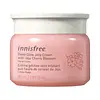What's inside
What's inside
 Key Ingredients
Key Ingredients

 Benefits
Benefits

 Concerns
Concerns

 Ingredients Side-by-side
Ingredients Side-by-side

Water
Skin ConditioningButylene Glycol
HumectantGlycerin
HumectantSqualane
EmollientCetyl Ethylhexanoate
EmollientLimnanthes Alba Seed Oil
Skin ConditioningArbutin
AntioxidantCopernicia Cerifera Wax
Cyclopentasiloxane
EmollientButyrospermum Parkii Butter
Skin ConditioningGlyceryl Stearate
EmollientCyclohexasiloxane
EmollientOrchid Extract
Skin ConditioningCaffeine
Skin ConditioningCamellia Sinensis Leaf Extract
AntimicrobialCamellia Japonica Leaf Extract
Skin ConditioningOpuntia Coccinellifera Fruit Extract
Skin ConditioningCitrus Unshiu Peel Extract
MaskingAdenosine
Skin ConditioningC12-20 Alkyl Glucoside
EmulsifyingC14-22 Alcohols
Emulsion StabilisingGlyceryl Caprylate
EmollientLauric Acid
CleansingMyristic Acid
CleansingBehenyl Alcohol
EmollientCetearyl Alcohol
EmollientStearic Acid
CleansingArachidyl Glucoside
EmulsifyingArachidyl Alcohol
EmollientXanthan Gum
EmulsifyingPalmitic Acid
EmollientPolyglyceryl-3 Methylglucose Distearate
EmulsifyingPolysorbate 20
EmulsifyingPolyacrylate-13
Polyisobutene
Propanediol
SolventPEG-100 Stearate
Hydrogenated Lecithin
EmulsifyingDisodium EDTA
Parfum
MaskingWater, Butylene Glycol, Glycerin, Squalane, Cetyl Ethylhexanoate, Limnanthes Alba Seed Oil, Arbutin, Copernicia Cerifera Wax, Cyclopentasiloxane, Butyrospermum Parkii Butter, Glyceryl Stearate, Cyclohexasiloxane, Orchid Extract, Caffeine, Camellia Sinensis Leaf Extract, Camellia Japonica Leaf Extract, Opuntia Coccinellifera Fruit Extract, Citrus Unshiu Peel Extract, Adenosine, C12-20 Alkyl Glucoside, C14-22 Alcohols, Glyceryl Caprylate, Lauric Acid, Myristic Acid, Behenyl Alcohol, Cetearyl Alcohol, Stearic Acid, Arachidyl Glucoside, Arachidyl Alcohol, Xanthan Gum, Palmitic Acid, Polyglyceryl-3 Methylglucose Distearate, Polysorbate 20, Polyacrylate-13, Polyisobutene, Propanediol, PEG-100 Stearate, Hydrogenated Lecithin, Disodium EDTA, Parfum
Water
Skin ConditioningGlycerin
HumectantPropanediol
SolventDipropylene Glycol
HumectantNiacinamide
SmoothingBetaine
Humectant1,2-Hexanediol
Skin ConditioningCarbomer
Emulsion StabilisingTromethamine
BufferingAmmonium Acryloyldimethyltaurate/Beheneth-25 Methacrylate Crosspolymer
Emulsion StabilisingDisodium EDTA
Ethylhexylglycerin
Skin ConditioningParfum
MaskingPrunus Yedoensis Leaf Extract
Skin ConditioningTocopherol
Antioxidant
 Reviews
Reviews

Alternatives
Ingredients Explained
These ingredients are found in both products.
Ingredients higher up in an ingredient list are typically present in a larger amount.
Disodium EDTA plays a role in making products more stable by aiding other preservatives.
It is a chelating agent, meaning it neutralizes metal ions that may be found in a product.
Disodium EDTA is a salt of edetic acid and is found to be safe in cosmetic ingredients.
Learn more about Disodium EDTAGlycerin is already naturally found in your skin. It helps moisturize and protect your skin.
A study from 2016 found glycerin to be more effective as a humectant than AHAs and hyaluronic acid.
As a humectant, it helps the skin stay hydrated by pulling moisture to your skin. The low molecular weight of glycerin allows it to pull moisture into the deeper layers of your skin.
Hydrated skin improves your skin barrier; Your skin barrier helps protect against irritants and bacteria.
Glycerin has also been found to have antimicrobial and antiviral properties. Due to these properties, glycerin is often used in wound and burn treatments.
In cosmetics, glycerin is usually derived from plants such as soybean or palm. However, it can also be sourced from animals, such as tallow or animal fat.
This ingredient is organic, colorless, odorless, and non-toxic.
Glycerin is the name for this ingredient in American English. British English uses Glycerol/Glycerine.
Learn more about GlycerinParfum is a catch-all term for an ingredient or more that is used to give a scent to products.
Also called "fragrance", this ingredient can be a blend of hundreds of chemicals or plant oils. This means every product with "fragrance" or "parfum" in the ingredients list is a different mixture.
For instance, Habanolide is a proprietary trade name for a specific aroma chemical. When used as a fragrance ingredient in cosmetics, most aroma chemicals fall under the broad labeling category of “FRAGRANCE” or “PARFUM” according to EU and US regulations.
The term 'parfum' or 'fragrance' is not regulated in many countries. In many cases, it is up to the brand to define this term.
For instance, many brands choose to label themselves as "fragrance-free" because they are not using synthetic fragrances. However, their products may still contain ingredients such as essential oils that are considered a fragrance by INCI standards.
One example is Calendula flower extract. Calendula is an essential oil that still imparts a scent or 'fragrance'.
Depending on the blend, the ingredients in the mixture can cause allergies and sensitivities on the skin. Some ingredients that are known EU allergens include linalool and citronellol.
Parfum can also be used to mask or cover an unpleasant scent.
The bottom line is: not all fragrances/parfum/ingredients are created equally. If you are worried about fragrances, we recommend taking a closer look at an ingredient. And of course, we always recommend speaking with a professional.
Learn more about ParfumPropanediol is an all-star ingredient. It softens, hydrates, and smooths the skin.
It’s often used to:
Propanediol is not likely to cause sensitivity and considered safe to use. It is derived from corn or petroleum with a clear color and no scent.
Learn more about PropanediolWater. It's the most common cosmetic ingredient of all. You'll usually see it at the top of ingredient lists, meaning that it makes up the largest part of the product.
So why is it so popular? Water most often acts as a solvent - this means that it helps dissolve other ingredients into the formulation.
You'll also recognize water as that liquid we all need to stay alive. If you see this, drink a glass of water. Stay hydrated!
Learn more about Water